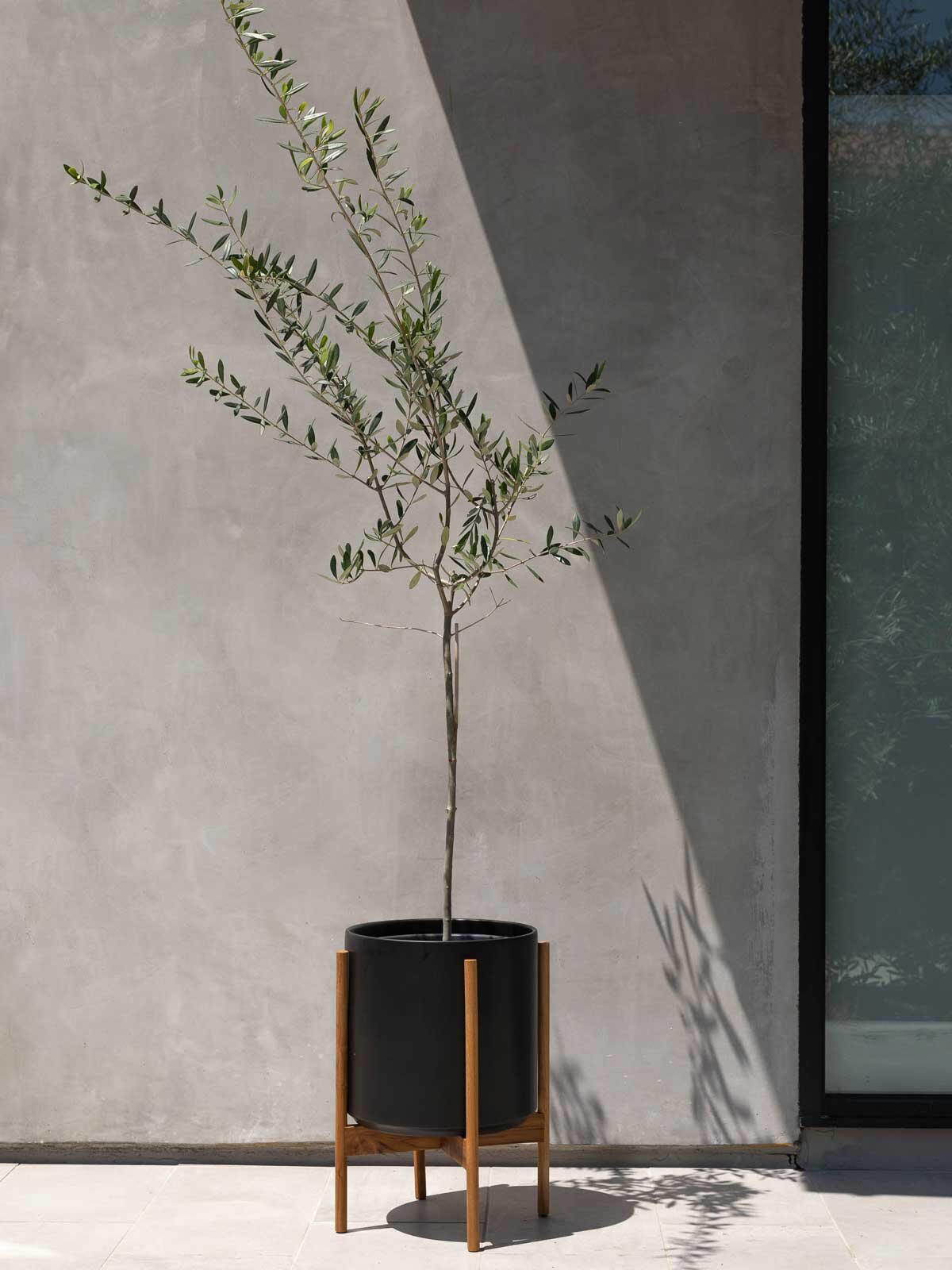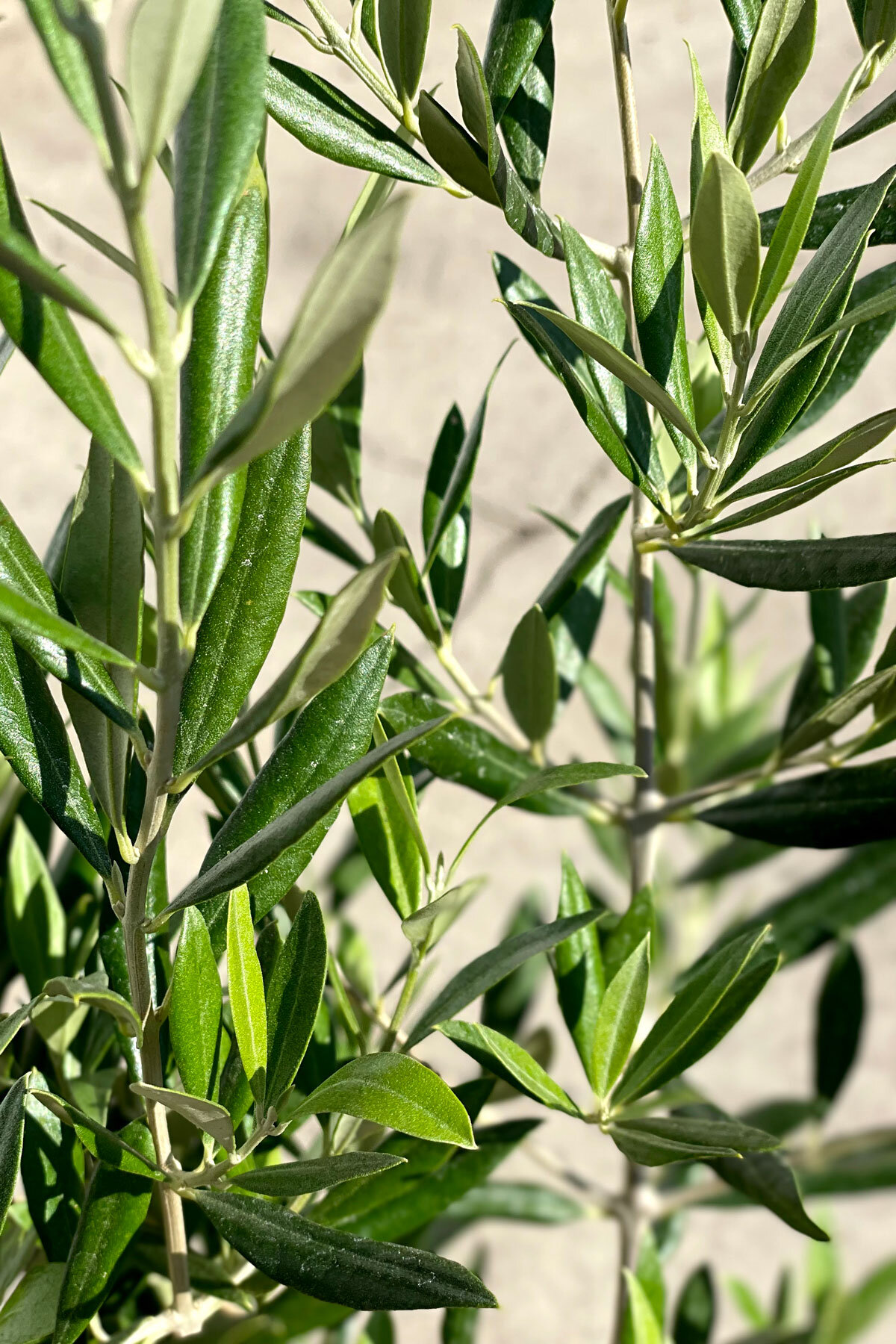How to Care For and Grow Your Olive Tree
With their elegant, silver-green foliage and graceful silhouettes, the Olive Tree or Olea europaea is a time-tested, infinitely elegant legacy tree and indoor plant for outdoor and indoor spaces that receive plenty of bright light. This plant variety is naturally both pest and drought resistant and easy to care for. But like all living things in the gardening realm, they have their own requirements and preferences for care. So read on and explore tips on optimal planters and dive into the horticulture of the Olea europaea.
How Much light do Olive Trees need?
The Olive Tree needs ample direct sunlight to thrive and produce fruit — ideally at least six hours a day or more of direct sunlight. Generally speaking, it is best if Olive Trees are placed outdoors. Refrain from placing in low light or medium light areas.
Water
Check moisture of topsoil weekly and give plant four cups of water when top two inches of soil are dry to the touch. Avoid overwatering and too much damp soil to prevent root-rot. Occasionally mist your Olive Tree to increase the humid climate. Prevent the soil from drying out.
Growth
It can take several months to years for Olive Trees to begin blooming fruit. Remember that light and full sun = fruit, and fertilize every two weeks during spring, summer and fall. Ensure your Olive Tree is receiving the right humidity,
MOISTURE METERS
Finally, a moisture meter that actually works.
Common problems with Olive Trees
Weeds
Symptom: Other plants growing in your Olive Tree’s pot and soil.
Cause: Particularly young Olive Trees can experience competition from opportunistic weeds.
Remedy: Pluck the weeds out as soon as you see them and make sure to get the roots out. Gentle herbicides can be used but are usually not required.
Yellow Leaves: Not Enough Light
Symptom: A large amount of yellow leaves in the tree’s canopy.
Cause: Too much shade, not enough direct light.
Remedy: Ensure that your tree is in a space that receives ample direct sunlight for at least 8 hours/day.
Yellow Leaves: Needs Fertilizer
Symptom: Majority of canopy exhibiting yellow leaves.
Cause: The tree needs more nitrogen, which is available through fertilizer.
Remedy: Give your tree a balanced fertilizer every two weeks from spring through fall.
Can I keep an Olive Tree indoors?
One of the most common question our Plant Stylists receive is whether or not Olive Trees can survive indoors, and while we don’t necessarily recommend it, this plant can be kept indoors if that area receives enough light and humidity—at least four hours a day of direct sun minimum. However, it is unlikely to bloom or produce fruit indoors.
If you’re interested in this look for your home, try the Black Olive Tree, a similar variety of plant that does better indoors. Read more about the differences between the Olive Tree and the Black Olive Tree aka Shady Lady.
How to maintain a beautiful and healthy Olive Tree
Care for your plant and it will thrive for years to come. See these simple tips to keep your tree flourishing.
Pruning: your tree will not need to be pruned for the first 2+ years of its life with you. When it is time, prune off any yellow or dying leaves from your tree with clean, sharp shears. Limited pruning to the fall and winter months.
Fertilizing: fertilize your tree twice monthly during the warmer months including spring, summer and fall with a balanced slow-release fertilizer. During these months, your Olive Tree may need to be watered more frequently.
Pests: To keep your olive trees thriving, regular inspections are crucial to catch signs of pests such as mealybugs, aphids, or spider mites early. Consider introducing neem oil as organic pest control methods
Shop the Olive Tree at leonandgeorge.com
How to propagate an Olive Tree
Beautiful plants are wonderful gifts to share and easy to grow, some Olive Tree varieties can be propagated from cuttings. Only propagate during summer with this one, when your tree experiences its highest rate of growth.
Prepare a rooting container or grower pot: a small nursery pot with drainage, and fill it with fruit tree potting soil and watch your planted roots grow
Select an eight-inch long, hardwood tip from one of your tree’s branches.
Trim the branch with clean, sharp shears. Be sure to sever it directly below a leaf “node or bud.”
Remove all but six or seven leaves from the branch.
Coat the cut end of the branch in 0.2-percent IBA rooting talc.
Plant the branch in the rooting container and place it outdoors in a spot that receives partial shade.
Mist the branch and its foliage regularly.
Check for roots after three months. Allow it to grow within the rooting container until sturdy, then transplant to a new pot, preferably during autumn.
Incorporating Olive trees into your collection of house plants can be a rewarding experience for any gardener. Their resilient and tolerant nature makes them an excellent choice for outdoor and indoor spaces, thriving in high light exposure. The lush foliage not only enhances your living environment but also contributes to improved air quality as they purify the indoor air. As you embark on this green journey, consider exploring our nursery for Olive Trees. Happy gardening!
Olive Tree
A classic and elegant addition to any brightly lit space, plus naturally pest and drought resistant.


